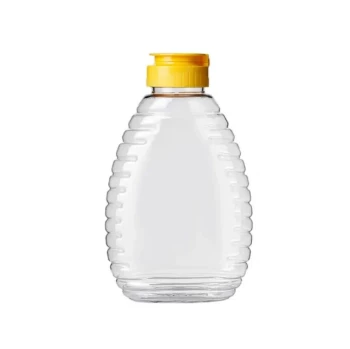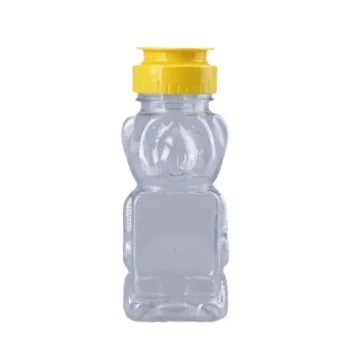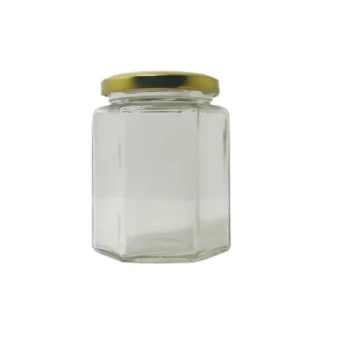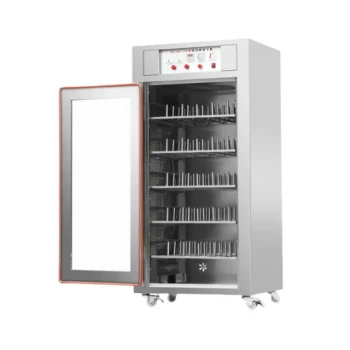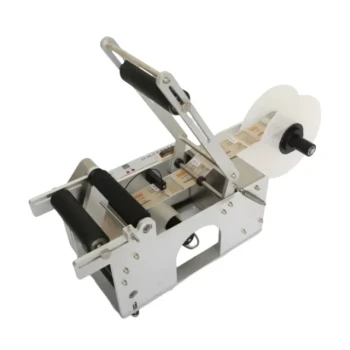Yes, you can and should store honey in stainless steel. Food-grade stainless steel is one of the most preferred materials for handling and storing honey because it is non-reactive, durable, and protects the honey from contamination. It will not corrode from honey's natural acidity or leach any unwanted flavors or materials into your product.
While the material of your container is important, the true keys to preserving honey's quality are ensuring the container is food-grade and, most critically, that it has an airtight seal to prevent moisture absorption.
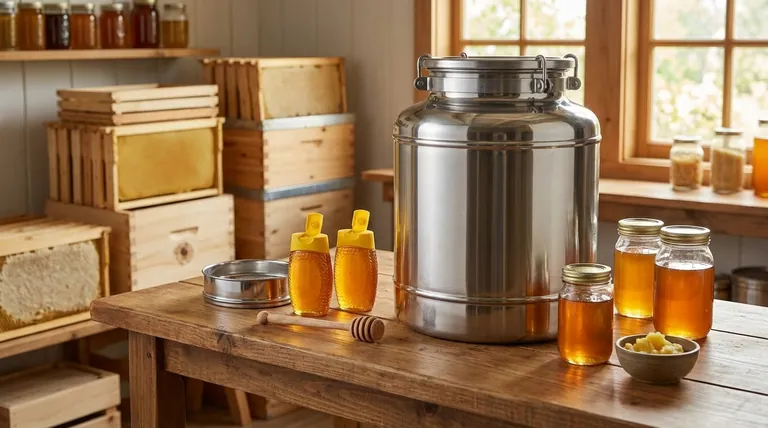
Why Stainless Steel is an Excellent Choice for Honey
Professionals and hobbyists alike rely on stainless steel for nearly every step of honey processing, from extraction to storage. This is due to a unique combination of properties that make it ideal for contact with this natural product.
Non-Reactivity and Purity
Honey is naturally acidic. Food-grade stainless steel is specifically engineered to be highly resistant to corrosion from such acids. This means it will not rust or leach metals into the honey, preserving its pure flavor and composition.
Durability and Longevity
Unlike glass, stainless steel containers will not shatter. They are exceptionally durable and resistant to physical damage. This makes them a reliable, long-term investment for beekeepers who need to store large quantities of honey safely.
Impermeability and Protection
Stainless steel provides a perfect barrier against external elements. It is non-porous, meaning it will not absorb odors or allow air and moisture to pass through the material itself, protecting the honey within.
The Critical Factors Beyond Container Material
Choosing stainless steel is an excellent start, but it's only one part of the equation. The following factors are just as crucial for maintaining honey quality over time.
The Importance of an Airtight Seal
Honey is hygroscopic, meaning it readily absorbs moisture from the surrounding air. If a container is not sealed properly, the honey's water content will rise, creating an environment where wild yeasts can thrive and cause fermentation. A well-sealing lid is non-negotiable.
Proper Storage Conditions
Honey should always be stored in a cool, dark, and dry place. Exposure to heat can darken the honey and alter its delicate flavor profile, while direct sunlight can degrade its quality over time.
The Need for Cleanliness
Before storing, honey should be filtered to remove impurities like wax particles. Likewise, the container—whether it's stainless steel, glass, or food-grade plastic—must be perfectly clean and dry to prevent contamination and preserve the honey's natural state.
Understanding the Trade-offs
While stainless steel is a superior material, it's important to understand the full context and avoid common mistakes.
Not All Metals Are Equal
Never use reactive metals like aluminum, copper, brass, or galvanized steel for storing honey. The acid in honey can corrode these materials, causing them to leach harmful metallic compounds into the product, rendering it unsafe to eat. Stick exclusively to food-grade stainless steel.
The Cost and Weight Factor
The primary downside of stainless steel is its cost and weight. High-quality stainless steel containers are significantly more expensive and heavier than their food-grade plastic counterparts. For many, a food-grade plastic bucket is a more practical and cost-effective solution.
The Lid is the Weak Point
Even the best stainless steel tank is useless if its lid does not create an airtight seal. Always check that the lid fits tightly, preferably with a food-grade gasket, to prevent moisture from ruining the honey.
Making the Right Choice for Your Goal
Your choice of container depends on your specific needs, volume, and budget.
- If your primary focus is long-term bulk storage and absolute purity: A food-grade stainless steel container with a tight-fitting, gasketed lid is the superior choice.
- If your primary focus is cost-effectiveness and easy handling: Food-grade plastic buckets or glass jars with secure lids are excellent and widely used alternatives.
- If you are processing honey (extracting or filtering): Stainless steel equipment is the industry standard for its unmatched durability, safety, and ease of cleaning.
Ultimately, preserving the integrity of your honey depends less on the specific material and more on ensuring it is clean, food-grade, and completely sealed from air and moisture.
Summary Table:
| Feature | Benefit for Honey Storage |
|---|---|
| Non-Reactive | Preserves pure flavor; won't leach metals or corrode from honey's acidity. |
| Durable | Shatter-proof and long-lasting, ideal for bulk storage. |
| Impermeable | Provides a perfect barrier against air, moisture, and odors. |
| Requires Airtight Seal | Critical to prevent moisture absorption and fermentation. |
Protect Your Honey Harvest with Professional-Grade Equipment
As a beekeeper, you invest significant effort into producing high-quality honey. Protect that investment with the right storage solutions. HONESTBEE supplies durable, food-grade stainless steel tanks and essential beekeeping equipment to commercial apiaries and distributors.
We understand the needs of large-scale operations. Our wholesale-focused model ensures you get reliable, professional equipment that safeguards your product's purity and extends its shelf life.
Contact HONESTBEE today to discuss your bulk storage needs and keep your honey in pristine condition.
Visual Guide
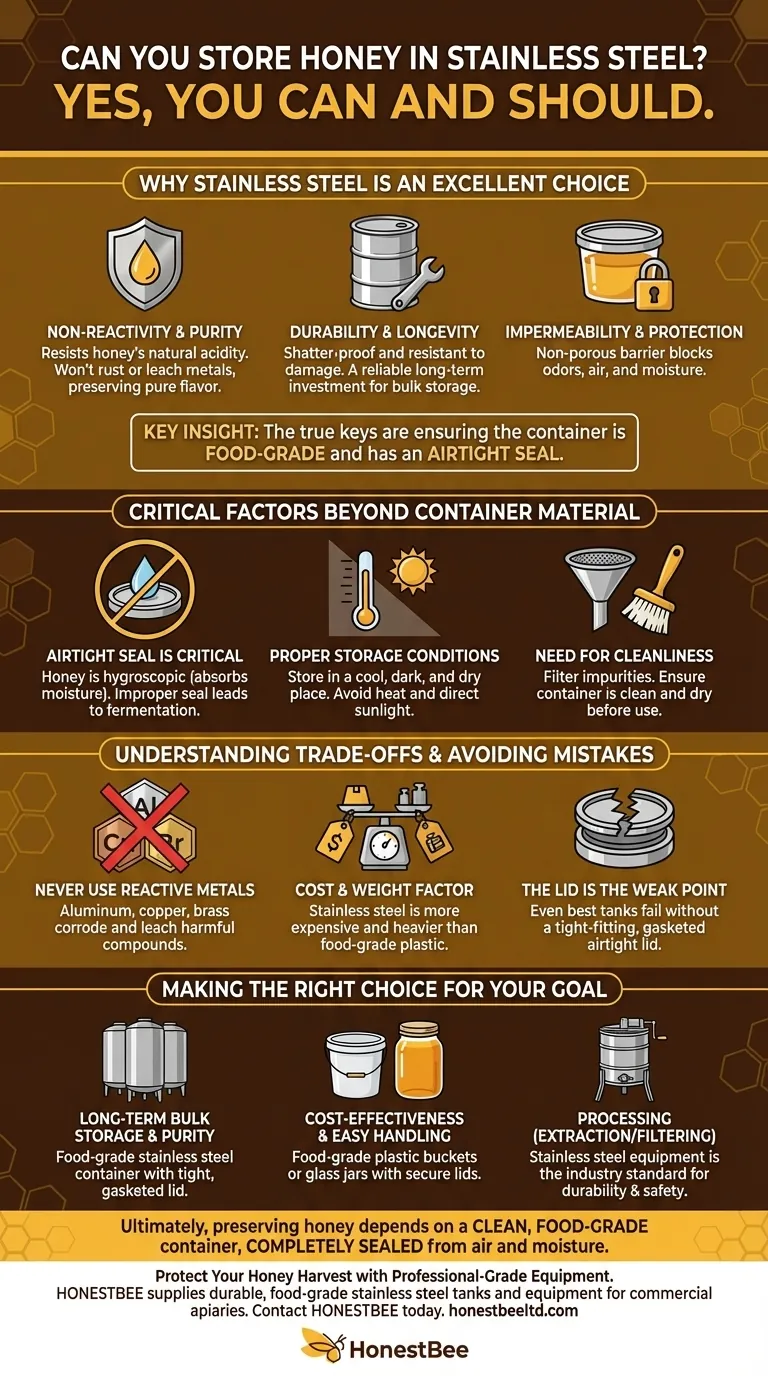
Related Products
- Inverted Squeezable Honey Jar with No Drip Flip Top Cap for Easy Pouring
- Classic Drum Shaped Glass Honey Jar with Airtight Lid
- Squeezable No-Drip Beehive-Shaped Honey Jars with Flip-Top Cap
- Classic Honey Bear Jars with Flip Top Dispensing Cap for Liquid Sweeteners
- Hexagonal Glass Honey Jars with Metal Lug Caps Elegant Versatile Packaging
People Also Ask
- What factors should be considered when choosing honey packaging? Optimize for Brand, Operations & Market
- What causes honey to crystallize? A Guide to Natural, High-Quality Honey
- What are the features of honey bottles? Design for Convenience & Long-Term Preservation
- What are the benefits of using glass jars for honey packaging? Preserve Flavor & Elevate Your Brand
- How long do you let honey sit before bottling? Achieve Crystal-Clear Honey for Your Business


